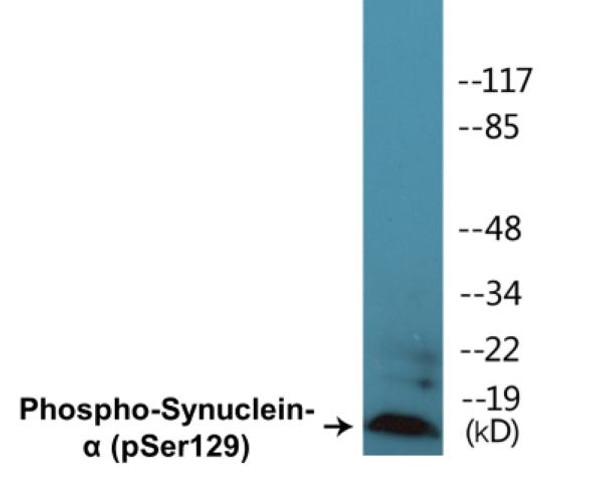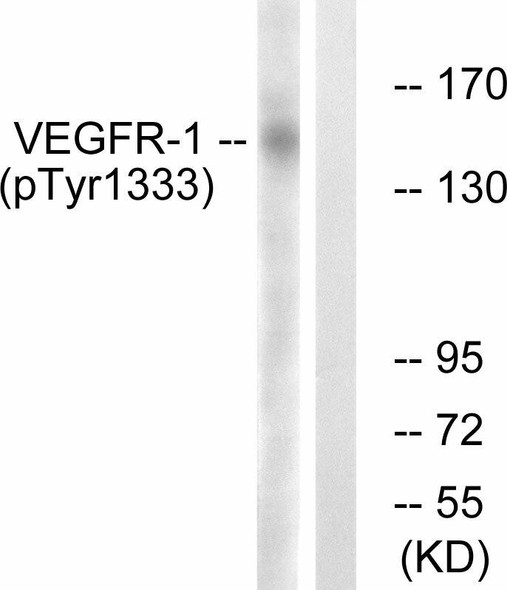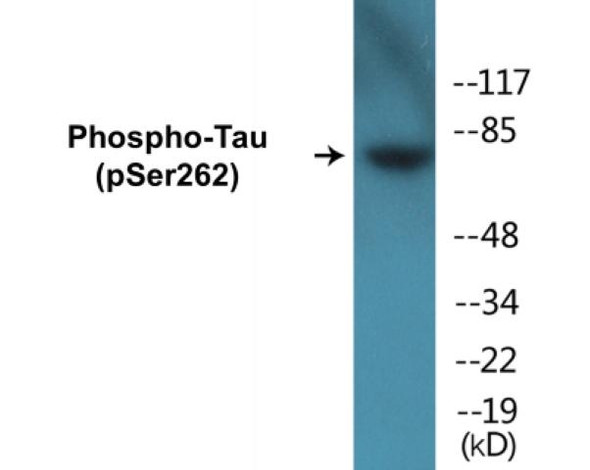Synuclein-a (Phospho-Ser129) Fluorometric Cell-Based ELISA Kit (FBCAB00034)
- SKU:
- FBCAB00034
- Product Type:
- ELISA Kit
- ELISA Type:
- Cell Based Phospho Specific
- Reactivity:
- Human
- Mouse
- Detection Method:
- Fluorometric
Description
Synuclein-a (Phospho-Ser129) Cell-Based ELISA Kit
The Synuclein-a (Phospho-Ser129) Cell-Based ELISA Kit is a convenient, lysate- free, high throughput and sensitive assay kit that can monitor Synuclein-a phosphorylation and expression profile in cells. The kit can be used for measuring the relative amounts of phosphorylated Synuclein-a in cultured cells as well as screening for the effects that various treatments, inhibitors (ie. siRNA or chemicals), or activators have on Synuclein-a phosphorylation.
How does our Synuclein-a (Phospho-Ser129) Fluorometric Cell-Based ELISA Kit work?
Qualitative determination of Synuclein-a (Phospho-Ser129) concentration is achieved by an indirect ELISA format. In essence, Synuclein-a (Phospho-Ser129) is captured by Synuclein-a (Phospho-Ser129)-specific primary (1°) antibodies while Dye 1-conjugated and Dye 2-conjugated secondary (2°) antibodies bind the Fc region of the 1° antibody. Through this binding, the dye conjugated to the 2° antibody can emit light at a certain wavelength given proper excitation, hence allowing for a fluorometric detection method. Due to the qualitative nature of the Cell-Based ELISA, multiple normalization methods are needed:
| 1. | A monoclonal antibody specific for human GAPDH is included to serve as an internal positive control in normalizing the target RFU values. |
| 2. | An antibody against the nonphosphorylated counterpart of Synuclein-a (Phospho-Ser129) is also provided for normalization purposes. The RFU values obtained for non-phosphorylated Synuclein-a can be used to normalize the RFU value for phosphorylated Synuclein-a. |
Synuclein-a (Phospho-Ser129) Fluorometric Cell-Based ELISA Kit -Information
| Product Name: | Synuclein-a (Phospho-Ser129) Fluorometric Cell-Based ELISA Kit |
| Product Code/SKU: | FBCAB00034 |
| Description: | The Synuclein-alpha (Phospho-Ser129) Fluorometric Cell-Based Phospho ELISA Kit is a convenient, lysate-free, high throughput and sensitive assay kit that can monitor Synuclein-? (Phospho-Ser129) protein phosphorylation and expression profile in cells. The kit can be used for measuring the relative amounts of phosphorylated Synuclein-? (Phospho-Ser129) in cultured cells as well as screening for the effects that various treatments, inhibitors (ie. siRNA or chemicals, or activators have on SNCA phosphorylation. |
| Dynamic Range: | > 5000 Cells |
| Detection Method: | Fluorometric |
| Storage/Stability: | 4°C/6 Months |
| Reactivity: | Human, Mouse, Rat |
| Assay Type: | Cell-Based ELISA |
| Database Links: | Gene ID: 6622, UniProt ID: P37840, OMIM #: 127750/163890/168600/168601/605543, Unigene #: Hs.271771 |
| Format: | Two 96-Well Plates |
| NCBI Gene Symbol: | SNCA |
| Sub Type: | Phospho |
| Target Name: | Phospho-Synuclein-? (Ser129) |
Kit Principle
Figure: Schematic representation of Assay Genie Cell-Based Fluorometric ELISA principle
Kit components | Quantity |
| 96-Well Black Cell CultureClear-Bottom Microplate | 2 plates |
| 10X TBS | 24 ml |
| Quenching Buffer | 24 ml |
| Blocking Buffer | 50 ml |
| 15X Wash Buffer | 50 ml |
| Primary Antibody Diluent | 12 ml |
| 100x Anti-Phospho Target Antibody | 60 µl |
| 100x Anti-Target Antibody | 60 µl |
| Anti-GAPDH Antibody | 110 µl |
| Dye-1 Conjugated Anti-Rabbit IgG Antibody | 6 ml |
| Dye-2 Conjugated Anti-Mouse IgG Antibody | 6 ml |
| Adhesive Plate Seals | 2 seals |
Additional equipment and materials required
The following materials and/or equipment are NOT provided in this kit but are necessary to successfully conduct the experiment:
- Fluorescent plate reader with two channels at Ex/Em: 651/667 and 495/521
- Micropipettes capable of measuring volumes from 1 µl to 1 ml
- Deionized or sterile water (ddH2O)
- 37% formaldehyde (Sigma Cat# F-8775) or formaldehyde from other sources
- Squirt bottle, manifold dispenser, multichannel pipette reservoir or automated microplate washer
- Graph paper or computer software capable of generating or displaying logarithmic functions
- Absorbent papers or vacuum aspirator
- Test tubes or microfuge tubes capable of storing ≥1 ml
- Poly-L-Lysine (Sigma Cat# P4832 for suspension cells)
- Orbital shaker (optional)
Kit Protocol
This is a summarized version of the kit protocol. Please view the technical manual of this kit for information on sample preparation, reagent preparation and plate lay out.
| 1. | Seed 200 µl of desired cell concentration in culture medium into each well of the 96-well plates. For suspension cells and loosely attached cells, coat the plates with 100 µl of 10 µg/ml Poly-L-Lysine (not included) to each well of a 96-well plate for 30 minutes at 37°C prior to adding cells. |
| 2. | Incubate the cells for overnight at 37°C, 5% CO2. |
| 3. | Treat the cells as desired. |
| 4. | Remove the cell culture medium and rinse with 200 µl of 1x TBS, twice. |
| 5. | Fix the cells by incubating with 100 µl of Fixing Solution for 20 minutes at room temperature. The 4% formaldehyde is used for adherent cells and 8% formaldehyde is used for suspension cells and loosely attached cells. |
| 6. | Remove the Fixing Solution and wash the plate 3 times with 200 µl 1x Wash Buffer for 3 minutes. The plate can be stored at 4°C for a week. |
| 7. | Add 100 µl of Quenching Buffer and incubate for 20 minutes at room temperature. |
| 8. | Wash the plate 3 times with 1x Wash Buffer for 3 minutes each time. |
| 9. | Dispense 200 µl of Blocking Buffer and incubate for 1 hour at room temperature. |
| 10. | Wash 3 times with 200 µl of 1x Wash Buffer for 3 minutes each time. |
| 11. | Add 50 µl of Primary Antibody Mixture P to corresponding wells for Synuclein-a (Phospho-Ser129) detection. Add 50 µl of Primary Antibody Mixture NP to the corresponding wells for total Synuclein-a detection. Cover the plate with parafilm and incubate for 16 hours (overnight) at 4°C. If the target expression is known to be high, incubate for 2 hours at room temperature. |
| 12. | Wash 3 times with 200 µl of 1x Wash Buffer for 3 minutes each time. |
| 13. | Add 50 ul of Secondary Antibody Mixture to corresponding wells and incubate for 1.5 hours at room temperature in the dark. |
| 14. | Wash 3 times with 200 µl of 1x Wash Buffer for 3 minutes each time. |
| 15. | Read the plate(s) at Ex/Em: 651/667 (Dye 1) and 495/521 (Dye 2). Shield plates from direct light exposure. |
| 16. | Wash 3 times with 200 µl of 1x Wash Buffer for 5 minutes each time. |
Synuclein-a (Phospho-Ser129) - Protein Information
| UniProt Protein Function: | SNCA: a member of the synuclein family. Abundantly expressed in the brain. Inhibits phospholipase D2 selectively. May integrate presynaptic signaling and membrane trafficking. Implicated in the pathogenesis of Parkinson's disease. A major component of amyloid plaques in the brains of patients with Alzheimer's disease. Two alternatively spliced isoforms transcripts have been identified. |
| UniProt Protein Details: | Protein type:Adaptor/scaffold Chromosomal Location of Human Ortholog: 4q21 Cellular Component: Golgi apparatus; nuclear outer membrane; mitochondrion; rough endoplasmic reticulum; lysosome; extracellular region; fibril; terminal button; inclusion body; cell cortex; mitochondrial respiratory chain complex I; cytosol; actin cytoskeleton; synaptic vesicle; platelet alpha granule membrane; growth cone; perinuclear region of cytoplasm; axon; cytoplasm; plasma membrane; ribosome; cell junction; nucleus Molecular Function:protein domain specific binding; identical protein binding; histone binding; zinc ion binding; kinesin binding; ferrous iron binding; microtubule binding; caspase inhibitor activity; beta-tubulin binding; magnesium ion binding; phosphoprotein binding; protein N-terminus binding; oxidoreductase activity; Hsp70 protein binding; calcium ion binding; dynein binding; protein binding; copper ion binding; phospholipase binding; phospholipid binding; tau protein binding; fatty acid binding; alpha-tubulin binding Biological Process: regulation of long-term neuronal synaptic plasticity; negative regulation of serotonin uptake; regulation of acyl-CoA biosynthetic process; adult locomotory behavior; positive regulation of apoptosis; negative regulation of norepinephrine uptake; mitochondrial membrane organization and biogenesis; microglial cell activation; response to lipopolysaccharide; positive regulation of endocytosis; dopamine biosynthetic process; negative regulation of transcription from RNA polymerase II promoter; negative regulation of caspase activity; negative regulation of monooxygenase activity; fatty acid metabolic process; positive regulation of neurotransmitter secretion; regulation of dopamine secretion; negative regulation of dopamine uptake; negative regulation of histone acetylation; calcium ion homeostasis; negative regulation of exocytosis; response to magnesium ion; negative regulation of protein amino acid phosphorylation; behavioral response to cocaine; receptor internalization; phospholipid metabolic process; fibril organization and biogenesis; synapse organization and biogenesis; dopamine uptake; negative regulation of neuron apoptosis; response to iron(II) ion; positive regulation of receptor recycling; aging; caspase activation; response to drug; neutral lipid metabolic process; protein destabilization; regulation of macrophage activation; regulation of glutamate secretion; negative regulation of microtubule polymerization; positive regulation of peptidyl-serine phosphorylation; negative regulation of dopamine metabolic process; organelle ATP synthesis coupled electron transport; regulation of locomotion; synaptic vesicle endocytosis; positive regulation of release of sequestered calcium ion into cytosol; regulation of excitatory postsynaptic membrane potential; negative regulation of transporter activity; negative regulation of apoptosis Disease: Parkinson Disease 4, Autosomal Dominant; Dementia, Lewy Body; Parkinson Disease 1, Autosomal Dominant |
| NCBI Summary: | Alpha-synuclein is a member of the synuclein family, which also includes beta- and gamma-synuclein. Synucleins are abundantly expressed in the brain and alpha- and beta-synuclein inhibit phospholipase D2 selectively. SNCA may serve to integrate presynaptic signaling and membrane trafficking. Defects in SNCA have been implicated in the pathogenesis of Parkinson disease. SNCA peptides are a major component of amyloid plaques in the brains of patients with Alzheimer's disease. Four alternatively spliced transcripts encoding two different isoforms have been identified for this gene. [provided by RefSeq, Mar 2009] |
| UniProt Code: | P37840 |
| NCBI GenInfo Identifier: | 586067 |
| NCBI Gene ID: | 6622 |
| NCBI Accession: | P37840.1 |
| UniProt Secondary Accession: | P37840,Q13701, Q4JHI3, Q6IAU6, A8K2A4, |
| UniProt Related Accession: | P37840 |
| Molecular Weight: | 140 |
| NCBI Full Name: | Alpha-synuclein |
| NCBI Synonym Full Names: | synuclein, alpha (non A4 component of amyloid precursor) |
| NCBI Official Symbol: | SNCA |
| NCBI Official Synonym Symbols: | PD1; NACP; PARK1; PARK4 |
| NCBI Protein Information: | alpha-synuclein; synuclein alpha-140; non A-beta component of AD amyloid |
| UniProt Protein Name: | Alpha-synuclein |
| UniProt Synonym Protein Names: | Non-A beta component of AD amyloid; Non-A4 component of amyloid precursor; NACP |
| Protein Family: | Alpha-synuclein |
| UniProt Gene Name: | SNCA |
| UniProt Entry Name: | SYUA_HUMAN |







